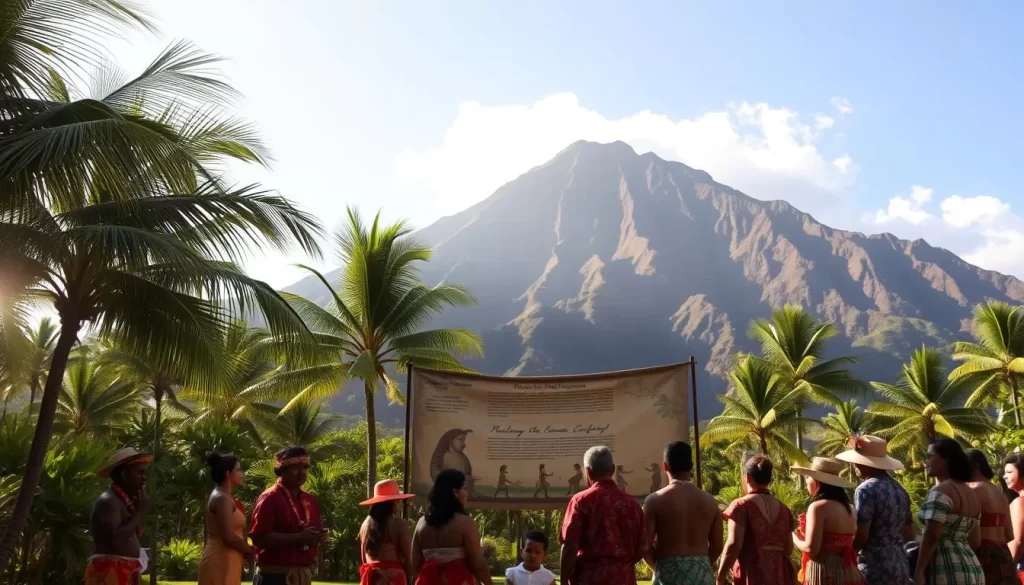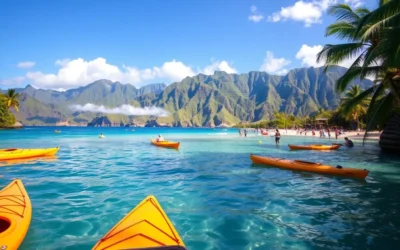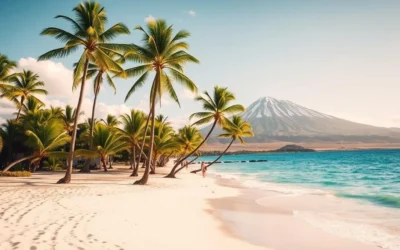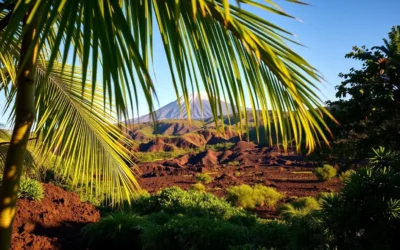Imagine a place where over 130 distinct languages create a vibrant cultural tapestry. This is the reality of the islands, where the language spoken reflects a rich history and diverse influences. Both Hawaiian and English hold official status here, making it a unique linguistic hub in the United States.
The Hawaiian language, deeply rooted in Polynesian traditions, plays a vital role in shaping local identity. While native speakers are few, efforts to revive and preserve this dialect have gained momentum over the years. This blend of old and new creates a fascinating linguistic environment.
From ancient Polynesian settlers to modern immigrants, the island’s population has contributed to this dynamic mix. Whether you’re a visitor or a local, understanding this linguistic diversity offers a deeper connection to the state’s culture and heritage.
The Historical Journey of Hawaii’s Languages
The linguistic landscape of the islands is a testament to centuries of cultural exchange and adaptation. From ancient Polynesian roots to modern revival efforts, the language spoken here tells a story of resilience and transformation.
Ancient Origins and Polynesian Roots
The first settlers arrived around 400 C.E., bringing with them the Hawaiian language. This dialect, deeply rooted in Polynesian traditions, became the foundation of communication for early inhabitants. Their language traditions continue to influence the island’s culture today.

Arrival of European, Asian, and Missionary Influences
In 1778, James Cook’s arrival marked the beginning of significant changes. Missionaries and colonial powers introduced new languages, blending with the native dialect. This mix created a unique linguistic environment that still thrives.
Language Decline and Revival Efforts
In 1896, the native language was banned in schools, leading to a sharp decline in speakers. However, modern efforts aim to restore ʻŌlelo Hawaiʻi, ensuring its survival for future generations. This revival is a vital part of preserving the island’s heritage.
Hawaii, United States: Official and widely spoken languages
The islands are a melting pot of cultures, where language serves as a bridge between traditions and modernity. Two dialects hold official status here, creating a unique linguistic environment.
Overview of Official Languages: English and ʻŌlelo Hawaiʻi
English is the primary language spoken by 74.2% of the population, making it the dominant mode of communication. However, it retains a local flavor influenced by the islands’ diverse heritage.
ʻŌlelo Hawaiʻi, though spoken by only 5.7% of the population, holds immense cultural significance. Recognized in the state constitution in 1978, it symbolizes the island’s identity and traditions.

The Role of Pidgin in Daily Communication
Pidgin, or Hawaiian Creole English, is widely used in everyday conversations. Developed during the plantation era, it blends English with influences from immigrant dialects like Japanese, Portuguese, and Filipino.
Today, approximately 700,000 persons use Pidgin in their daily lives. It’s a testament to the islands’ multicultural roots and remains a vital part of local identity.
| Language | Percentage of Speakers | Cultural Significance |
|---|---|---|
| English | 74.2% | Primary mode of communication |
| ʻŌlelo Hawaiʻi | 5.7% | Symbol of cultural identity |
| Pidgin | Approx. 50% | Everyday use among locals |
Diversity of Language Influences and Local Dialects
The blend of cultures in this region has created a unique linguistic mosaic that continues to evolve. Over 130 distinct languages are spoken here, reflecting the rich tapestry of its population. This diversity is a testament to the island’s history as a hub for immigrants from around the world.

Immigrant Contributions and Multilingual Communities
Immigrants have played a significant role in shaping the linguistic landscape. Asian communities, for instance, have introduced languages like Tagalog, Japanese, and Chinese, which are now part of everyday conversations. These contributions have enriched local dialects and created a vibrant multilingual environment.
Portuguese and Filipino workers, who arrived during the plantation era, also left a lasting impact. Their languages blended with English and the native Hawaiian language, giving rise to unique forms of communication.
The Evolution of Hawaiian Creole English
Hawaiian Creole English, or Pidgin, is a fascinating example of linguistic evolution. Developed during the plantation era, it combines English with elements from immigrant languages. Today, it’s spoken by hundreds of thousands of persons, making it a vital part of local identity.
“Pidgin is more than just a language; it’s a reflection of our shared history and culture.”
Its unique sound system, where ‘t’ or ‘d’ replaces ‘th’ in many words, sets it apart from standard English. This creole language continues to evolve, adapting to modern influences while preserving its roots.
Other Languages Shaping the Islands’ Soundscape
Beyond Pidgin, other languages contribute to the region’s unique soundscape. Spanish, Korean, and Vietnamese are among the many languages spoken by residents. This diversity ensures that the island remains a melting pot of cultures and traditions.
For example, the Hispanic community, which makes up 12% of the population, has introduced Spanish into local media and education. These influences help maintain the region’s identity as a multicultural hub.
| Language | Community | Influence |
|---|---|---|
| Tagalog | Filipino | Everyday communication |
| Japanese | Asian | Cultural events |
| Portuguese | European | Historical roots |
| Spanish | Hispanic | Media and education |
This remarkable blend of languages makes living and communicating here a truly unique experience. Whether you’re a visitor or a local, understanding this diversity offers a deeper connection to the region’s culture and heritage.
Conclusion
The rich linguistic heritage of the islands reflects centuries of cultural exchange and resilience. From ancient Polynesian roots to modern revival efforts, the language journey here is a testament to adaptability and identity. Both English and ʻŌlelo Hawaiʻi hold official status, symbolizing the state’s unique blend of tradition and modernity.
Pidgin, born from immigrant influences, remains a vital part of daily life for many persons. Its evolution mirrors the island’s multicultural history, blending diverse dialects into a cohesive form of communication. This linguistic diversity is more than just words—it’s a reflection of shared history and culture.
Understanding these languages offers a deeper connection to the island’s heritage. Whether you’re a visitor or a local, appreciating this diversity enriches your experience. Explore the ongoing evolution of these dialects and their role as a home for countless cultures.
The above is subject to change.
Check back often to TRAVEL.COM for the latest travel tips and deals.






